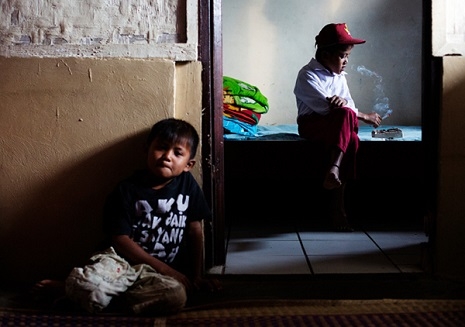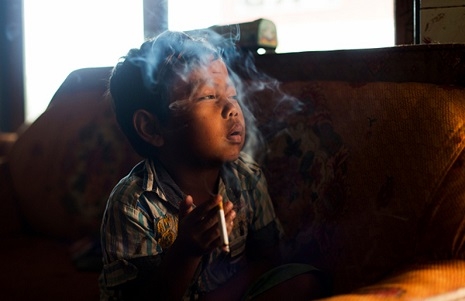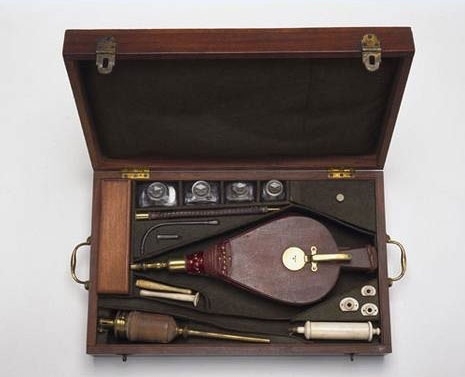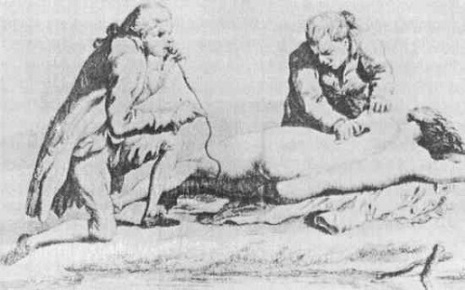
Canadian documentary photographer Michelle Siu records “vulnerable people and disenfranchised cultures.” In the past that has meant the First Nations people of Lake St. Martin in Manitoba, who have been displaced from their land by flooding, or the destruction wrought upon the Philippines by Typhoon Haiyan. In her series, “Marlboro Boys,” the disaster is man-made.
With the fifth largest tobacco market in the world, Indonesia fosters a large portion of their economy on addiction, both at home and abroad. Liu’s portraiture of young boys smoking is both lovely and startling, but rather than presenting her work without comment for transnational rubbernecking, she contextualizes her subjects within the unique political conditions of the country. From her website:
Indonesia’s relationship with tobacco is complex. Cheap cigarettes, ubiquitous tobacco advertising, a powerful tobacco lobby, inadequate information about health risks and lack of enforcement of national health regulations helps fuel a national addiction.
67% of men in Indonesia smoke and they keep getting younger. In 1995, around 71,000 children aged 10 to 14 were smokers and in 2010 that figure increased to more than 426,000.
International efforts at quelling Indonesian tobacco usage have been completely fruitless. In 2003, The World Health Organization adopted the Framework Convention on Tobacco Control as their first ever internationally negotiated treaty. Of the 179 countries participating—representing almost 90 percent of the world population—Indonesia has yet to join.








Via Juxtapoz







